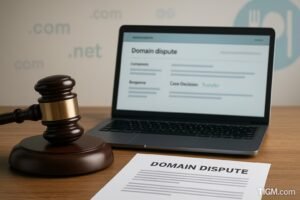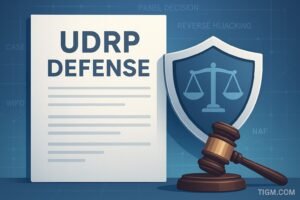An insurance company just got hit with a Reverse Domain Name Hijacking finding after trying to seize EverPeak.com through a UDRP — a domain that was registered years before the company’s brand even existed.
Panelist Alan L. Limbury called it a classic “Plan B” case, where a company files a UDRP after failing to buy a domain through normal channels.
The Setup
Cake Insure, Inc. operates an insurance business called EverPeak using the domain EverPeakInsurance.com. The company launched that brand well after EverPeak.com was originally registered.
When Cake Insure tried buying EverPeak.com through a GoDaddy broker, they couldn’t get a response from the registrant. So they filed a UDRP instead.
The problem? Under UDRP rules, you need to prove three elements: the domain is identical or confusingly similar to your trademark, the registrant has no legitimate rights to it, and — critically — the domain was registered and used in bad faith.
Cake Insure couldn’t prove bad faith registration because their brand didn’t exist when the domain was registered.
The “Renewal in Bad Faith” Argument
Facing this obvious hurdle, Cake Insure’s legal team from Talus Law Group tried a creative workaround: they argued the domain was renewed in bad faith.
The logic? Even if the original registration predated their trademark, renewing the domain after their brand launched constituted bad faith.
Panels have occasionally accepted this argument in narrow circumstances — typically when there’s clear evidence the domain holder renewed specifically to target a newly launched trademark.
But here’s where Cake Insure’s case fell apart: they provided no evidence that the domain holder even knew about their EverPeak insurance brand, let alone renewed the domain with the intent to target it.
Why This Is “Plan B” RDNH
Panelist Limbury identified this as a textbook “Plan B” case — one of the most common patterns leading to RDNH findings.
The sequence is predictable: Company wants domain. Company tries to buy domain. Purchase attempt fails. Company files UDRP instead, hoping the threat of legal proceedings will force a transfer.
UDRP panels take a dim view of this approach because it abuses the dispute resolution process. The UDRP exists to combat cybersquatting — not to give companies a second chance at acquiring domains after legitimate purchase negotiations break down.
When a company files knowing they can’t meet the UDRP’s requirements, that’s bad faith use of the administrative process.
What RDNH Actually Means
Reverse Domain Name Hijacking is defined in the UDRP rules as “using the Policy in bad faith to attempt to deprive a registered domain-name holder of a domain name.”
An RDNH finding goes on the public record and carries reputational damage, but there’s no financial penalty within the UDRP process itself. That’s been a point of controversy in the domain industry for years.
Domain owners who receive RDNH findings can potentially sue under the Anticybersquatting Consumer Protection Act (ACPA) for damages up to $100,000 — but that requires filing a separate federal lawsuit, which most domain holders can’t afford.
So practically speaking, RDNH is mostly a public shaming mechanism. Still, companies represented by reputable law firms generally want to avoid having their names attached to RDNH decisions.
Common RDNH Triggers
WIPO’s case law summary lists several scenarios that frequently result in RDNH findings:
- The complainant knew it couldn’t prove one of the three required UDRP elements
- The domain registration clearly predates any trademark rights
- The complaint was filed after failed purchase negotiations (Plan B)
- The complainant provided false information or misled the panel
- No reasonable interpretation of the facts supports a finding of bad faith
Cake Insure’s case hit multiple triggers: domain predated their trademark, failed purchase attempt, and no viable bad faith argument.
Why Companies Still Try
Despite the risk of RDNH, companies continue filing questionable UDRPs because the math sometimes works in their favor.
A UDRP costs around $1,500 for a single-member panel. For a company with in-house or retainer counsel, that’s a rounding error. If there’s even a 10% chance the domain holder doesn’t respond or the panel rules in their favor, it might be worth the gamble.
The domain holder, meanwhile, faces the burden of drafting a response, gathering evidence, and potentially hiring legal counsel — all for a domain they legitimately own.
That imbalance is why RDNH findings exist, even if they lack teeth.
The Takeaway
Cake Insure’s RDNH finding reinforces a clear lesson: if your trademark postdates the domain registration, you need exceptionally strong evidence of bad faith to win a UDRP.
Arguments like “renewal in bad faith” only work when backed by concrete evidence that the domain holder specifically targeted your brand. Without that proof, you’re likely heading toward an RDNH finding.
The better approach? If purchase negotiations fail and you have no legitimate UDRP case, move on. Register an alternative domain or add a descriptive modifier.
Filing a UDRP you can’t win just puts your company’s name in the RDNH database and hands your opponent a PR victory.








